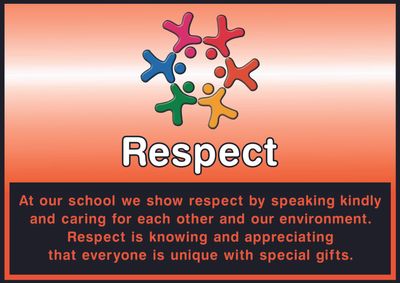Student Wellbeing
Our values at Living Faith are Compassion, Doing Your Best, Forgiveness, Respect, Responsibility and Teamwork. These values underpin relational management within the school setting. Throughout Term 1, students and staff are focusing on the value of respect - respecting self, others and the environment.

Outlined in our Healthy Relationships and Student Well-Being Policy you will find a Code of Conduct for all stakeholders responsible for the well-being of your child. It is important to note that we insist students have the right to learn, teachers have the right to teach, and that both parties are to treat each other with dignity and respect.
Throughout the year students will learn about the Zones of Regulation program, a systematic, cognitive behavioural approach used to teach self-regulation by categorising all the different ways we feel and states of alertness we experience into four coloured zones.
These four zones are:
● Red Zone - used to describe extremely heightened states of alertness and intense emotions. A person may be elated or experiencing anger, rage, devastation, or terror when in the Red Zone.
● Yellow Zone - used to describe a heightened state of alertness and elevated emotions, however, one has more control when they are in the Yellow Zone. A person may be experiencing stress, frustration, anxiety, excitement, silliness, the wiggles, or nervousness when in the Yellow Zone.
● Green Zone - used to describe a calm state of alertness. A person may be described as happy, focused, content, or ready to learn when in the Green Zone. This is the zone where optimal learning occurs.
● Blue Zone - used to describe low states of alertness and down feelings such as when one feels sad, tired, sick, or bored.

There is no such thing as a good zone or a bad zone, rather it is expected that there are times when it is appropriate for us to experience each of these different zones. Throughout the day at
school, your child is involved in a number of check-ins to determine what zone they are in. Each class has scheduled Student Wellbeing time at the start of the day and after each break to allow staff to build relationships with students and to support students who may need help regulating their emotions after break time. Over time, they will learn how to use various strategies to move between the different zones. During Term 1, students will learn specifically about what puts them in the red zone (their triggers) and what they can do to regulate their emotions back to the green zone. In conjunction with this, they will also learn to look at a problem and evaluate the size of the problem to check that the size of their reaction matches this.

If you have any concerns regarding specific student behaviour or student wellbeing, please discuss these with your child’s class teacher.
Melissa Tronc
Director of Senior Primary